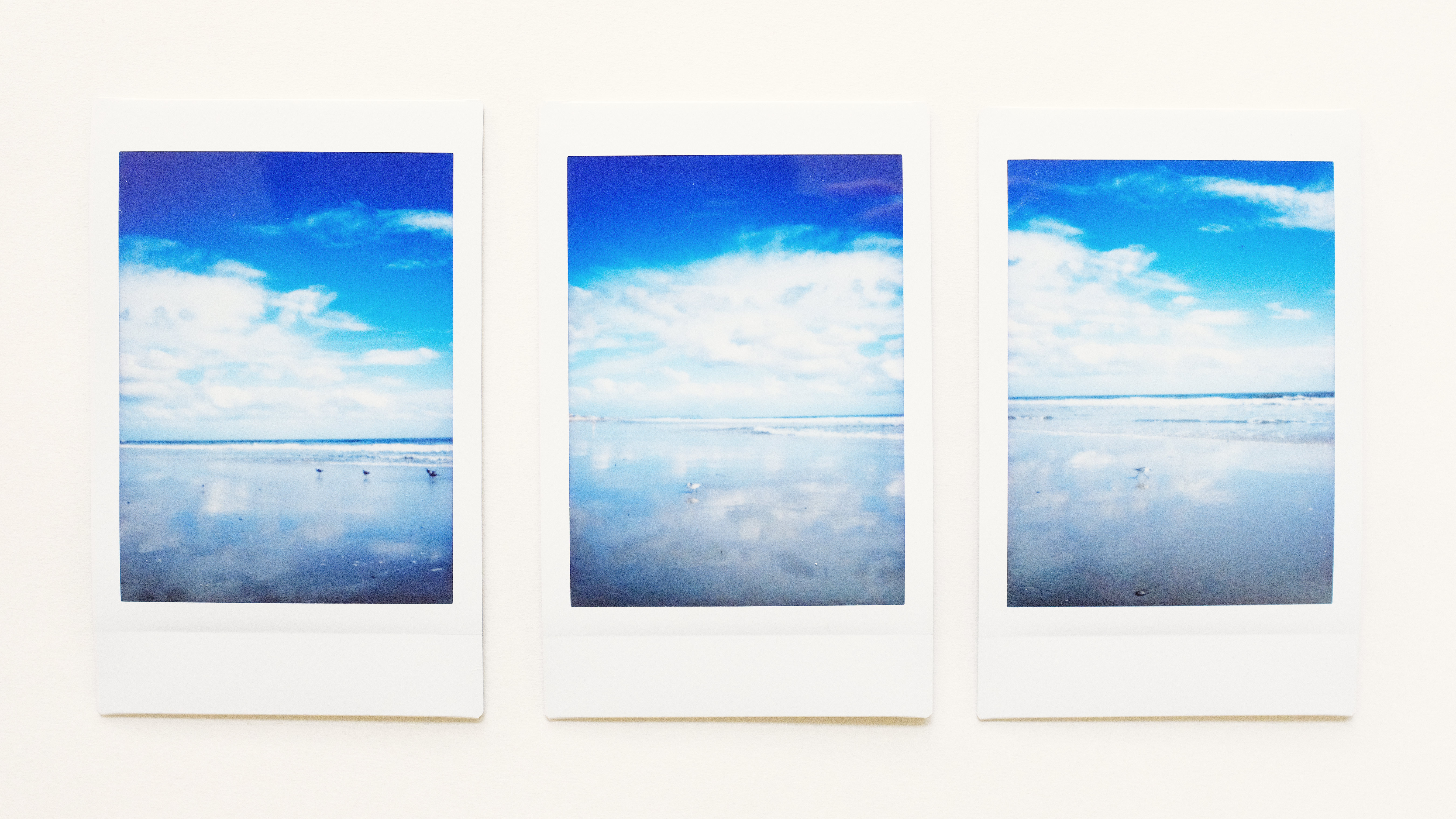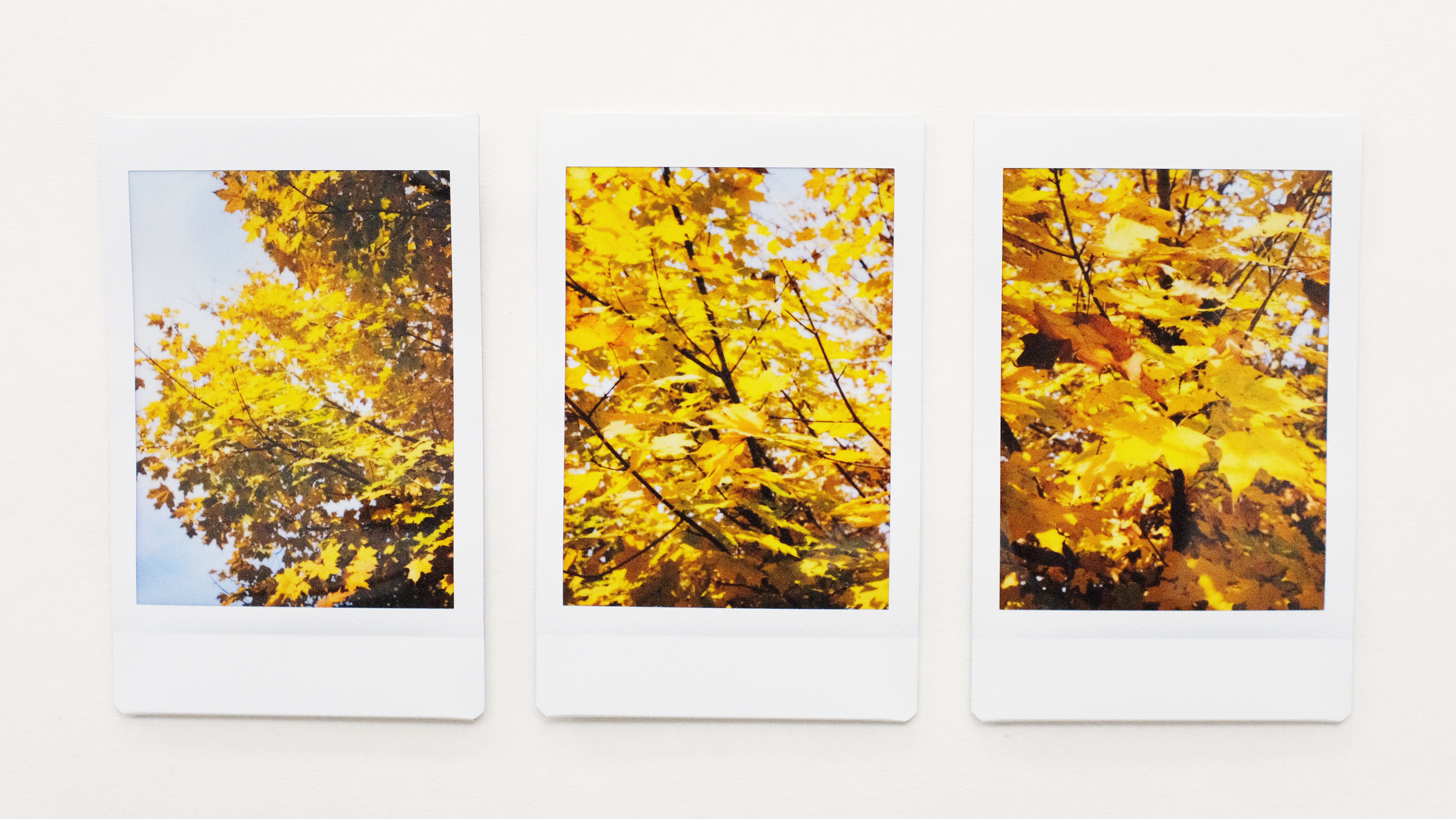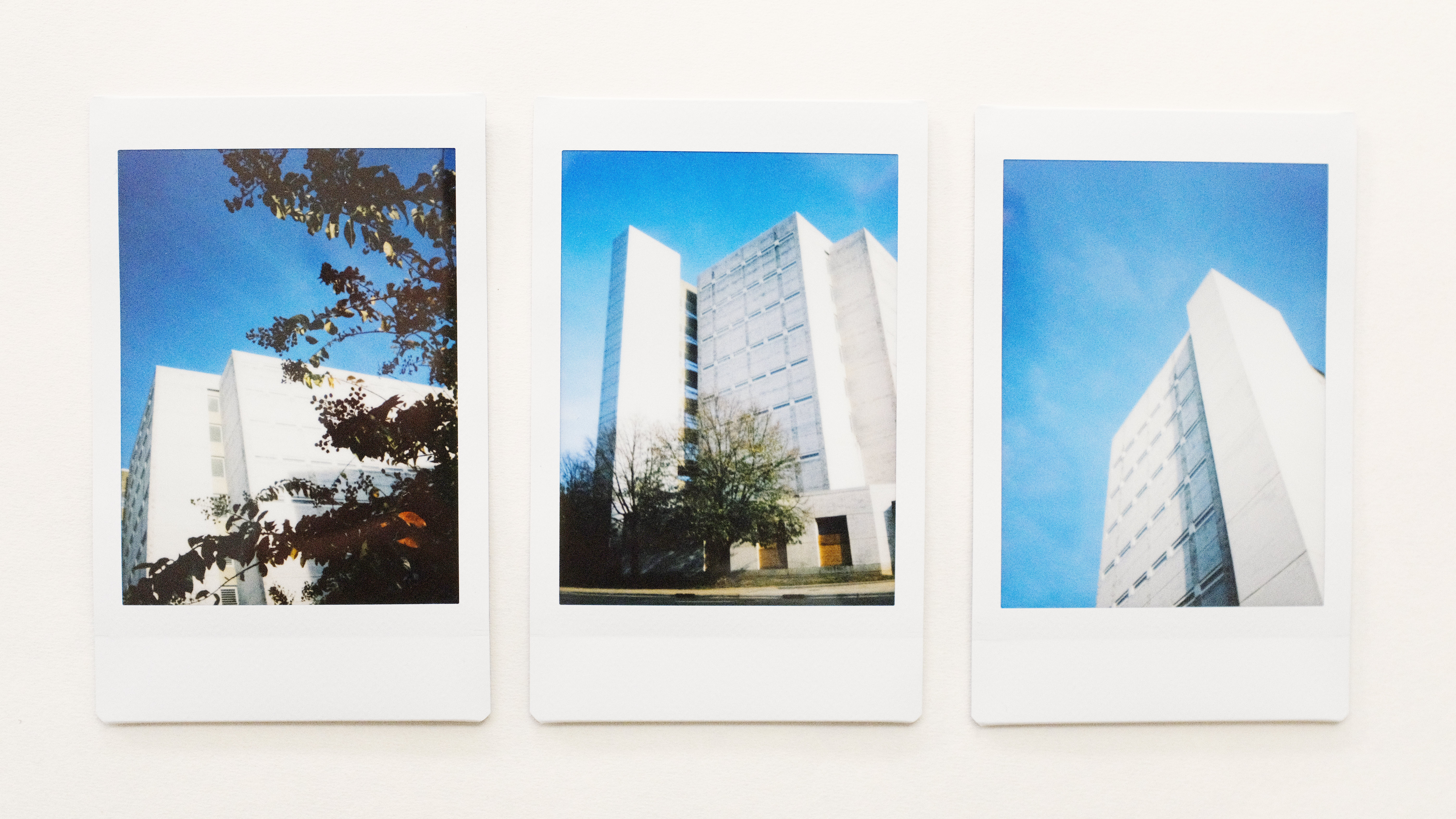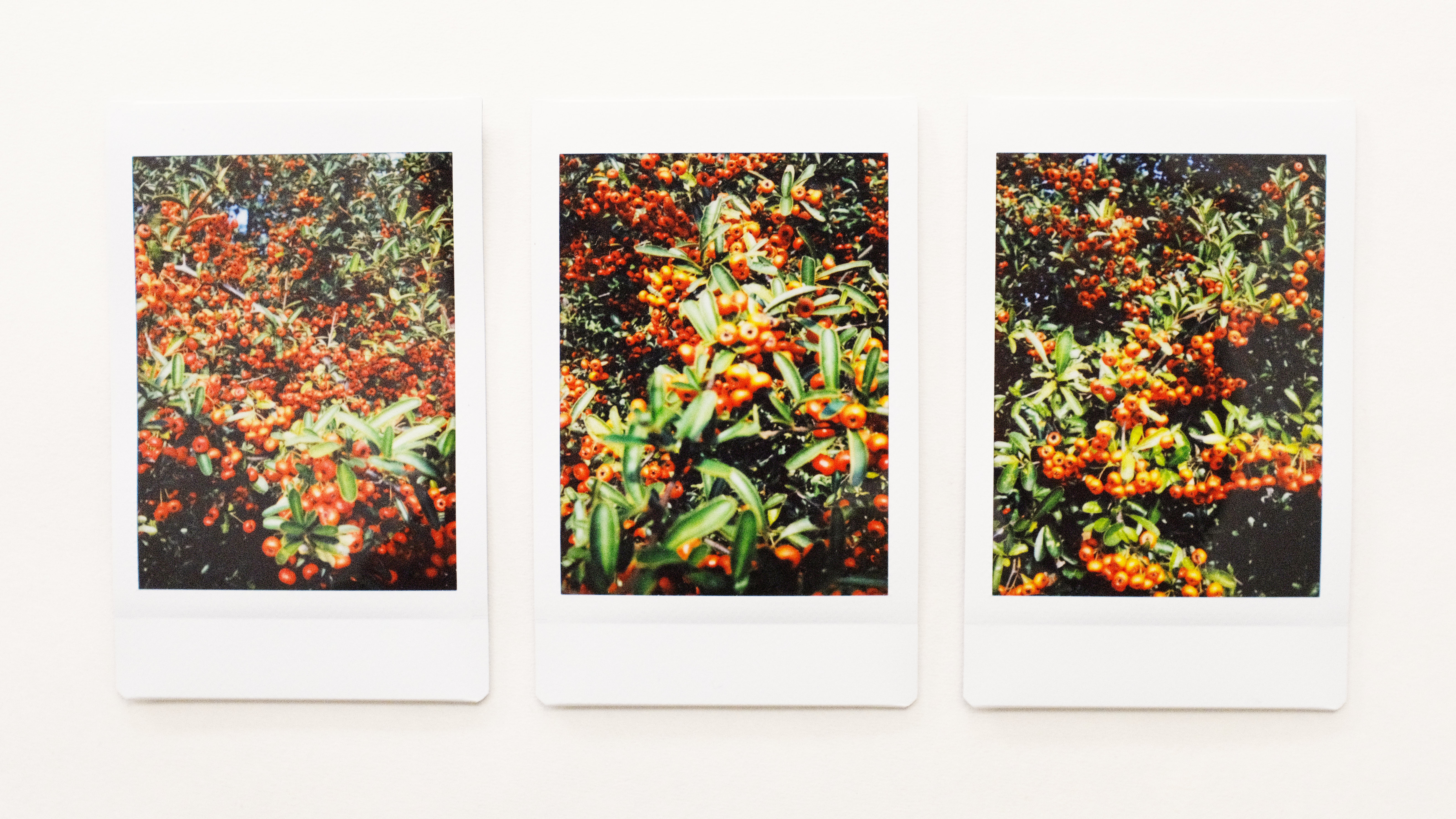Each year my church publishes an Advent devotional with entries written by congregants. Normally we print copies and share them at the beginning of Advent, five weeks before Christmas. But since we weren't meeting in person in 2020 we decided to go digital and make a website. Check it out here.
The devotional is very much a community project. Congregants write the entries, and our pastors Curt and Ray wrote introductions and spiritual practices for each week. Katie Billheimer contributed lovely drop caps that give a modern nod to illuminated medieval manuscripts.
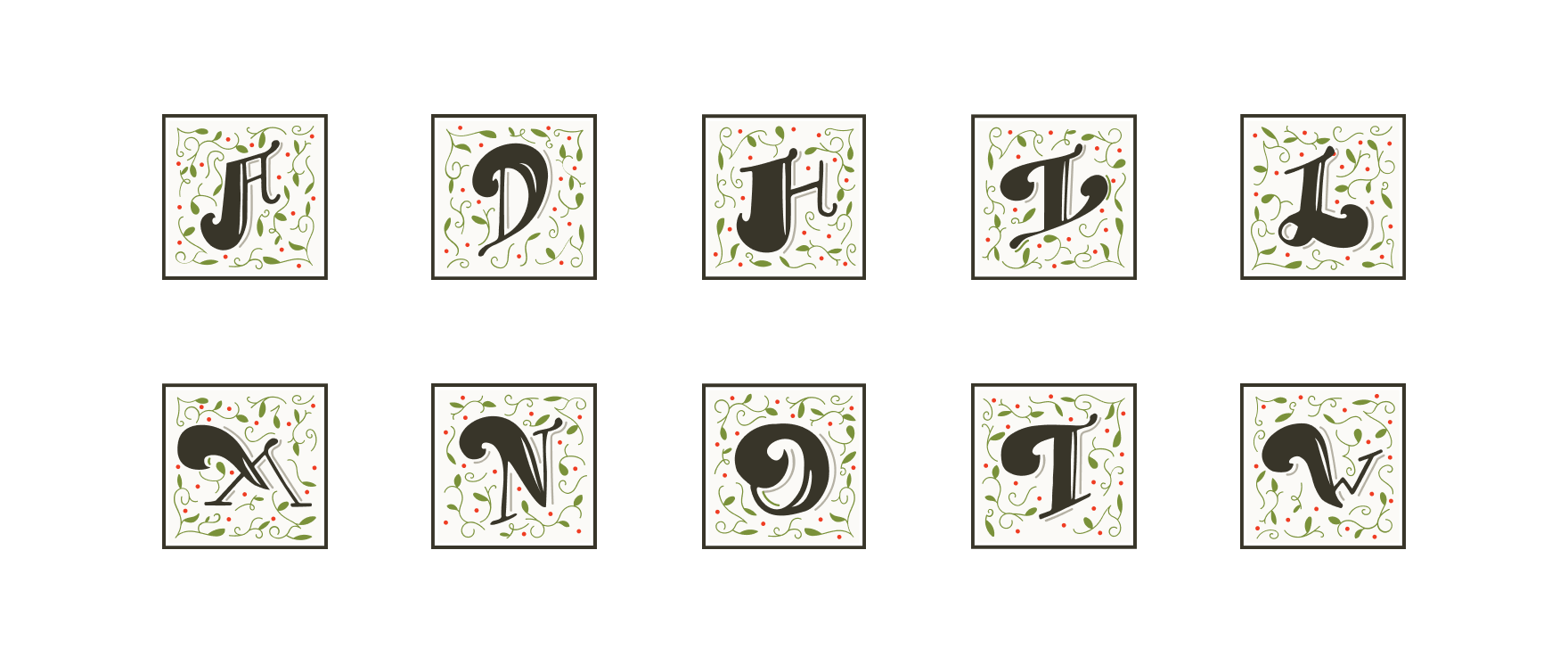
I also took sets of instant photos to accompany each week. Below is a little I wrote about them.
This has been a year of looking. Sequestered at home by the pandemic, our experience of the world has been limited by what we can see around us: through our windows, through our screens, in our rooms. For many, this limitation has been oppressive. We want to get out! To travel and visit with others, to go to our favorite places without concern for our health. I feel these things too, but I have also come to savor this near-sightedness, the things I notice when I'm stuck at home, the habits of mind and sight that I feel taking root. I look at things differently than I did a year ago.
For this year's advent devotional, I've made a set of instant photo triptychs: three juxtaposed images of people and places around North Carolina. They mostly focus on the natural world, something that has been a stabilizing presence to me through these difficult months. The trees and plants and animals are blissfully unaware of the virus plaguing our nation and world. They go about their vegetable and animal lives, follow their own rhythms without care for the morrow — something we never seem to be able to do. This poem by Wendell Berry describes the peace that can come when we rest in their peace:
The Peace of Wild Things
When despair for the world grows in me
and I wake in the night at the least sound
in fear of what my life and my children’s lives may be,
I go and lie down where the wood drake
rests in his beauty on the water, and the great heron feeds.
I come into the peace of wild things
who do not tax their lives with forethought
of grief. I come into the presence of still water.
And I feel above me the day-blind stars
waiting with their light. For a time
I rest in the grace of the world, and am free.
One triptych stands out from the others, the images of the Durham County Detention Facility in downtown Durham. Walking past the austere buildings on a sunny afternoon, I found myself reflecting on parallels between our collective experience of the pandemic and the lives of imprisoned people: the pain of isolation we feel, the limitations imposed on our lives, the indeterminacy of return to "normal life." Even if we cannot presently visit the imprisoned in person, we can visit them in our minds, and hearts, and prayers.
Triptychs are a form of early Christian art from the Middle Ages, typically paintings of scenes from Scripture. They would be placed prominently in churches and the homes of wealthy patrons, and used for devotional purposes. They form a tripartite view of things, something worth reflecting on. And for the readings, I wanted to make something that felt tactile at a time when we experience images in increasingly abstract, commodified ways. I also wanted to create something that felt down-to-earth and ordinary, even throwaway. Vision is available to all of us. We're forever surrounded by scenes of beauty and significance, no matter where we are. We just need a little willingness to look.
